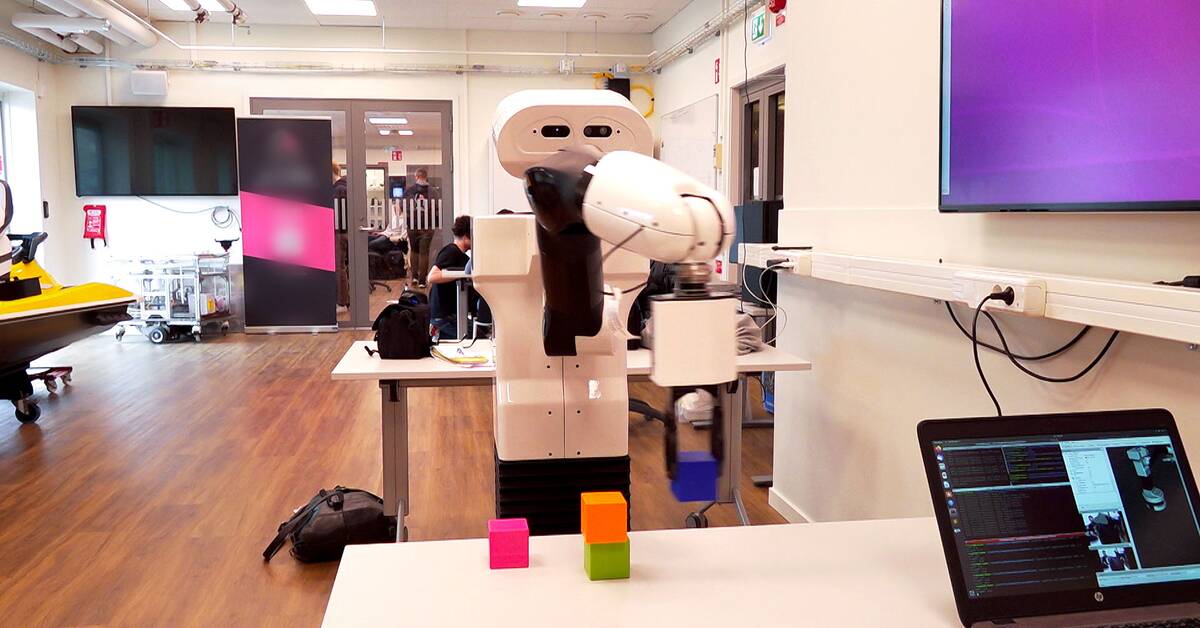"Tiago" rolls around in a laboratory at Chalmers in Gothenburg.
Nowadays, the robot can stack blocks on a table without the stack tipping over.
In the past, the stack often overturned, but the robot has learned to avoid it by registering how people stack blocks.
- It piles things up high and realizes that if it continues, they will overturn.
It repeats and makes a change.
The problem can be solved and thus prevented from happening again, says Karinne Ramirez-Amaro, associate professor of robotics at Chalmers' department of systems and control.
Robots in the kitchen
The idea is that robots could work in, for example, a kitchen if they can adapt to a changing environment.
- You do not want to have your fine porcelain bowls dropped on the floor.
We want the user to see that the robot does what it is supposed to, but then the user needs to be able to see what the robot intends to do.
To test that part of the work, the researchers have rigged a system with monitors and equipment for virtual reality, including VR glasses.
The screen shows what the robot should do, so that it becomes clear before someone presses the "perform the task" button.
When will these kinds of robots work in someone's home?
- It is a very difficult question.
The robot needs to be able to perceive the whole environment.
A table or chair can stand in the way.
The robot can not go up stairs and it limits.
There may be a dog or a cat and their movements can not be predicted from the robot.
A few years away
A company with trucks but no pets is more realistic.
- It will take a few years though, says Karinne Ramirez-Amaro.
Robots that plan and communicate with the help of artificial intelligence also feel a little scary to some people.
- It is a fairly normal reaction, but the robot will not have human ability.
I compare a bit with the mobile phone: We did not know we needed it, but it is very useful.
The calculator too.
They have increased our capacity on a cognitive level, says Karinne Ramirez-Amaro.

